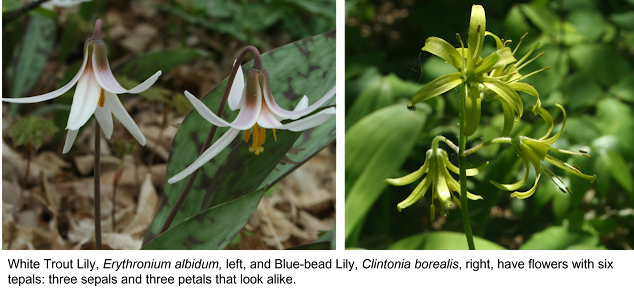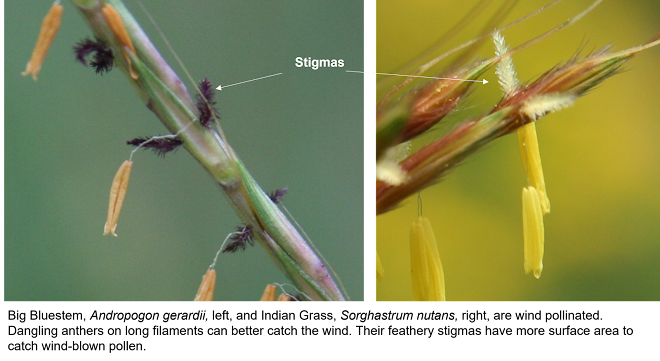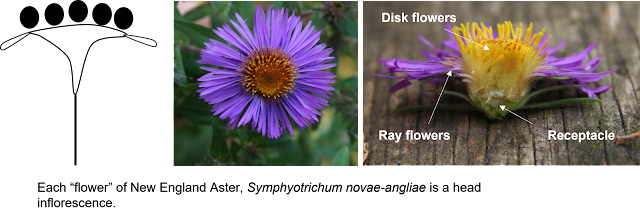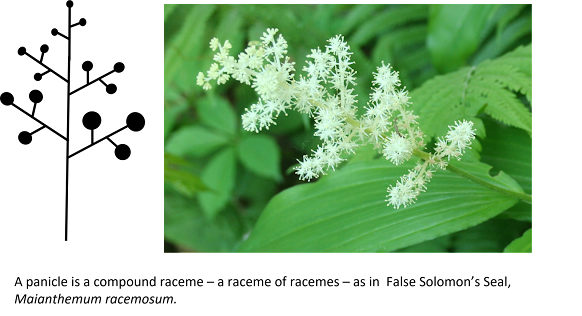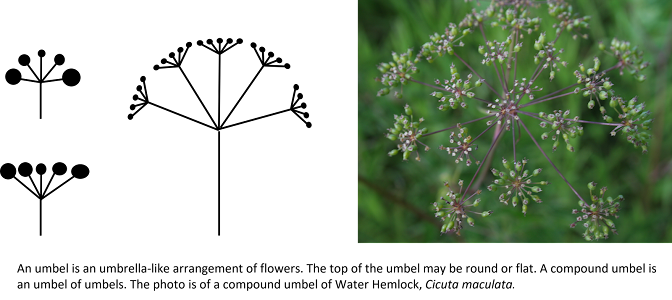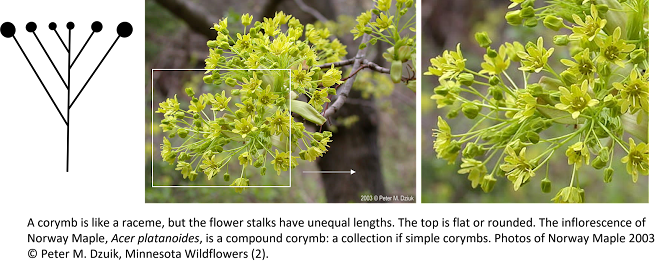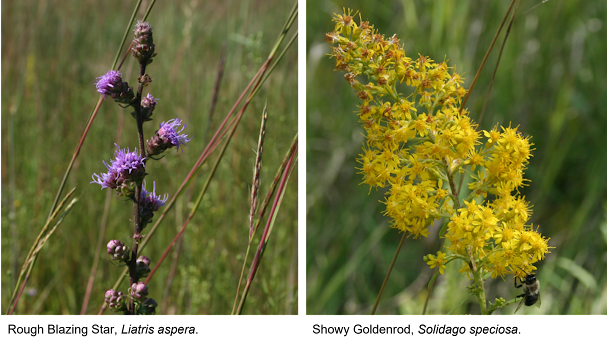 |
| Large-flowered Trillium, Trillium grandiflorum |
Thanks to the four biomes that meet here, Minnesota hosts a diversity of plant life. According to the most recent MNTaxa plant checklist, the state is home to at least 2,250 species and varieties of vascular plants (1). Of those, about 94% are flowering plants, and most guidebooks focus mostly or entirely on that group. To help identify these plants, many wildflower guides rely on flower parts – their presence or absence, their number, their appearance –to arrive at a plant's name.
It’s useful, then, to know how flowers are put together. This post introduces basic
flower structure, beginning with the names of flower parts and some common variations and then introducing some terms for flower clusters, called inflorescences.
Flower parts
In a model flower, parts are organized in four whorls. From outermost to innermost, they are sepals, petals, stamens and one or more pistils. In some flowers, pistils are composed of joined parts, called carpels (seed leaves), to form a compound pistil. In others, the pistils are composed of only one carpel, so they’re called simple pistils. The diagram below shows a simple pistil.
All the sepals together form the calyx, from a Greek word describing a husk or a case for a bud. Many flower buds are enclosed in and protected by a calyx before they open. Similarly, all the petals together form the corolla, from a Latin word meaning wreath or crown.
Each of the flowers below has all four parts. Sharp-lobed hepatica has flowers with multiple stamens, multiple simple pistils, five
petals, and five sepals. Large-flowered trillium has three sepals, three
petals, six stamens, and one compound pistil formed of three joined carpels.
Three stigmas emerge from the top of the pistil.
The photo of wild geranium below shows two flowers in different stages of development. In the left flower, stamens are at peak maturity and are releasing pollen. The pistil in this flower is immature and hidden by the stamens. In the right flower, the stamens are past peak and are withering. The pistil, however, is in its prime, with five, curved stigmas ready to accept pollen.
Because the stamens and pistils mature at different times, the flower can’t pollinate itself. This difference in timing, called dichogamy (dy-COG-amee), favors cross-pollination and mixing of genes, creating more diverse - and perhaps more successful – offspring.
Tepals
Tepals are petals and sepals that look alike. They are
especially common among plants in the lily family and its close relatives. Tulips
and day lilies are two garden favorites that have tepals. Native white trout lily and blue-bead lily also have tepals.
Regular (actinomorphic) and irregular (zygomorphic) flowers
When viewed face on, regular flowers look like wheels or
stars: Their parts are evenly distributed all the way around. More than one
line can be drawn through the center of the flower to create similar halves.
Such flowers are also called radially symmetric or actinomorphic, which means
star-shaped.
In contrast, irregular flowers have only one plane of
symmetry: Only one line can be drawn across their faces to produce similar
halves. Irregular flowers are also called bilaterally symmetric or zygomorphic.
“Zygo” is a Greek prefix meaning pair.
Complete and incomplete flowers
If flowers have all four parts – sepals, petals, stamens and
pistils – they’re complete. If they’re missing one or more of these parts, they’re
incomplete. Wild strawberry, for example, has complete flowers. The flowers of Canada anemone, however, have no petals and are incomplete. In that plant, sepals are
the large, colorful parts that attract pollinators.
Perfect and imperfect flowers
These terms refer to the reproductive parts of a flower, the
pistils and stamens. A perfect flower has both parts, whereas an imperfect
flower has only one. A staminate flower has only stamens; a pistillate
flower has only pistils.
If a species has imperfect flowers and the staminate and
pistillate flowers are on the same plant, the species is monoecious
(mon-EE-shus), meaning one house. If the species has staminate and pistillate
flowers on different plants, it is dioecious (dy-EE-shus), meaning two
houses. Sometimes dioecious plants are said to have separate “female” and
“male” individuals.
Most flowers of silver maple, for example, are imperfect. Staminate
and pistillate flowers are shown below. They may be on separate trees or on the
same tree, so the plants can be dioecious or monoecious, respectively.
Occasionally, a tree may also have perfect flowers.
Wind-pollinated flowers
Wind pollinated flowers don’t rely on insects to visit them,
so they lack showy petals and sepals. Stamens and stigmas, however, are often numerous and obvious when the flowers mature. Silver maple, shown above, is wind
pollinated, as are willows and aspens. Grasses are also wind pollinated. Two prairie
grasses, big bluestem and Indian grass, are shown below.
Inflorescences
Some plants, like tulips or roses, produce flowers singly.
Others produce flowers in clusters called inflorescences.
An aster, for example, isn’t one flower but many tiny ones,
all clustered on a flat, rounded, or conical receptacle. The flowers in the
center are called disk flowers. Those around the edge, often bearing petal-like
rays, are called ray flowers. This arrangement, called a head inflorescence, is typical of plants in the
aster or sunflower family.
Diagrams and photos of a head inflorescence and other common
types are below. In the diagrams, black circles represent flowers. Different sizes of circles indicate that some flowers in an inflorescence mature sooner than others. The larger the circle, the earlier it opens. If all circles are the same size, they mature at the same time.
Mixed inflorescences
Adding more challenge, some plants have mixed or combined types of inflorescences. Rough Blazing Star, for example, has heads
arranged in a spike, and Showy Goldenrod has heads arranged in a panicle.
(1) MNTaxa: The State of Minnesota Vascular Plant Checklist.
Minnesota Department of Natural Resources. Accessed March 30, 2022, online at https://www.dnr.state.mn.us/eco/mcbs/plant_lists.html.
(2) Minnesota Wildflowers: A field guide to the flora of
Minnesota. Online at minnesotawildflowers.info.




